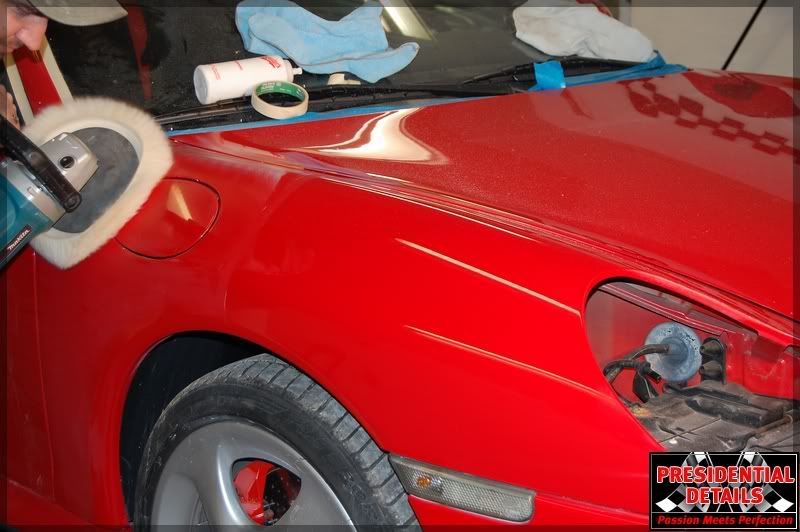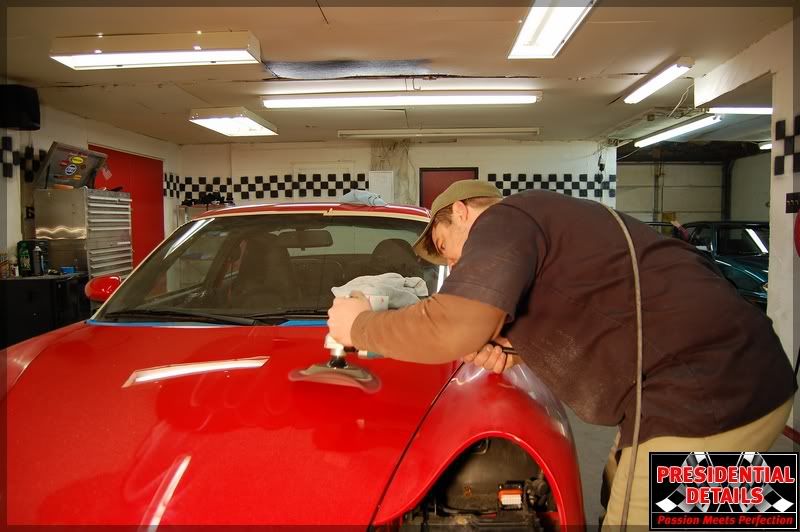Speaking for myself only. When it comes to speed and angle, yes, I was moving pretty fast on that Silver Ferrari. That particular paint was pretty easy to cut and I was working to cross cut the pattern, but I may not have shown that very clearly.
There are a few things I think are the whole video that aren't in that clip. First, the backing plate I was using is flexible as was the pad, so even though the angle of the machine might be higher, the contact patch itself was pretty flat and big. Also, I use a very fine polish and make sure that polish is evenly distributed over the entire pad so I don't get dry pad scuffs no matter what part of the pad hits the paint. Also notice, I have little to no fling. My polishes are used in the pad, not on the paint, there's no slurrying around, the pad holds the cutter and the pad acts like a very fine abrasive disk - very, very fine. I sometimes get dust if the paint is very dry and also, I won't use a product if it has a bad effect on rubber - beyond the obvious that any polish will eat rubber for lunch if you hit it hard.
Keeping compound/polish out of the gaps comes down to keeping just enough polish on the pad that it won't pile up and going off of or parallel to the edges - almost any polish will pile up on an edge if the pad runs onto it. Even then, a good polish should, even when dry, come out of the gaps without a lot of effort. I'm not sure what causes some polishes to be hard to get out of the gaps but I've found that those having fillers to hide swirls tend to have that problem.
There are lots of ways to get good results, I know mine work because I've made a living for a long time using them in a very competitive detailing environment, but I know there are others here who get results as good as mine using entirely different products and techniques.
Robert
And I'm talking about the speed he goes over the surface, not the rpm's of the buffer itself) I was always taught that the slower you go the less swirls you will get etc. If someone could enlighten me I would appreciate it!!!



